This year I’ve discovered a new trail in Long Point. It’s called “Birding Trail 8” according to Google Maps, but the signs at the location say it’s part of the Big Creek Conservation Area. In any case, it’s right along the Causeway road that runs down Long Point into Lake Erie, and the trail goes through some of the conservation area’s wetlands. My most recent hike along this trail was this past weekend and I encountered some interesting creatures along the way.
Being a wetland, the air was filled with the calls of Red-winged Blackbirds (Agelaius phoeniceus), the males sporting their signature red/yellow epaulets and the females in their mottled brown stripes. Female Red-winged Blackbirds continue to catch my attention because they are often doing all kinds of different things and they don’t have the distinctive look of the Males. I’ve taken many a picture of Female Red-wings thinking they’re a different species only to review my photos and find that I’ve taken yet more pictures of Female Red-winged Blackbirds rather than new and unique species. Not that I mind much, as I find basically any species interesting. The only picture I took of a Red-wing on this hike was a Female that had what looks like nesting material in her beak.
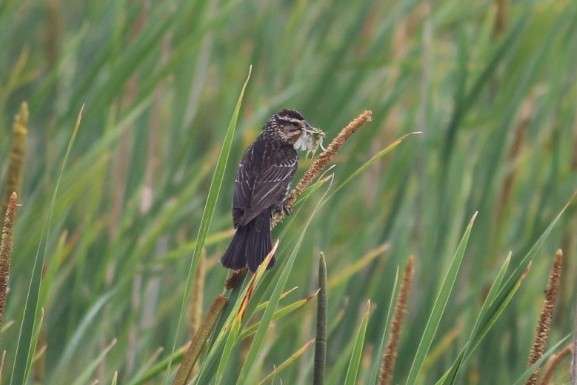
One thing you may have heard about Red-winged Blackbirds is their divebombing behaviour when you approach too closely to their nest. Well, there must have been a nest right on the edge of the trail because for the first stretch of this path I was running with my head down while I felt wings flapping at the back of my head. It was an exhilarating and frankly terrifying experience. If only I could have told the aggressive bird that I had no interest in raiding its nest. Thankfully I wasn’t physically harmed, just seriously intimidated by a bird not much bigger than my hand.
Having run through the Red-wing gauntlet, I got some decent photos of Mute Swans (Cygnus olor). There are 3 species of Swans that occur in Southern Ontario, but only one (the introduced Mute Swan) has an orange bill, so it’s pretty easy to identify at close range. If you’re wondering, the other two are Tundra and Trumpeter. Although called the Mute Swan (apparently because it’s less vocal than other Swans) this one was making creepy grunting noises, not sure why.

Another bird caught my eye, hovering in midair above the water. I say hovering, because that’s what it appears to do, but the bird must have been doing some incredible movements to stay in one place as it pinpointed its prey below. The bird was a Belted Kingfisher (Megaceryle alcyon), the only species of Kingfisher that occurs in Canada. My pictures aren’t the greatest as it was decently far away, but you can still make out its incredibly long beak.
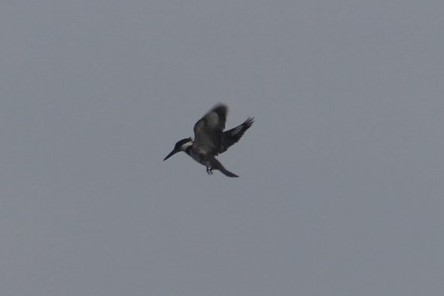
A much less noticeable bird than the Red-winged Blackbirds or the Kingfisher was the small Common Yellowthroats (Geothlypis trichas). I saw one Male on this loop of the trail, clinging to some reeds, and in my second round I encountered a Female in the same general area.
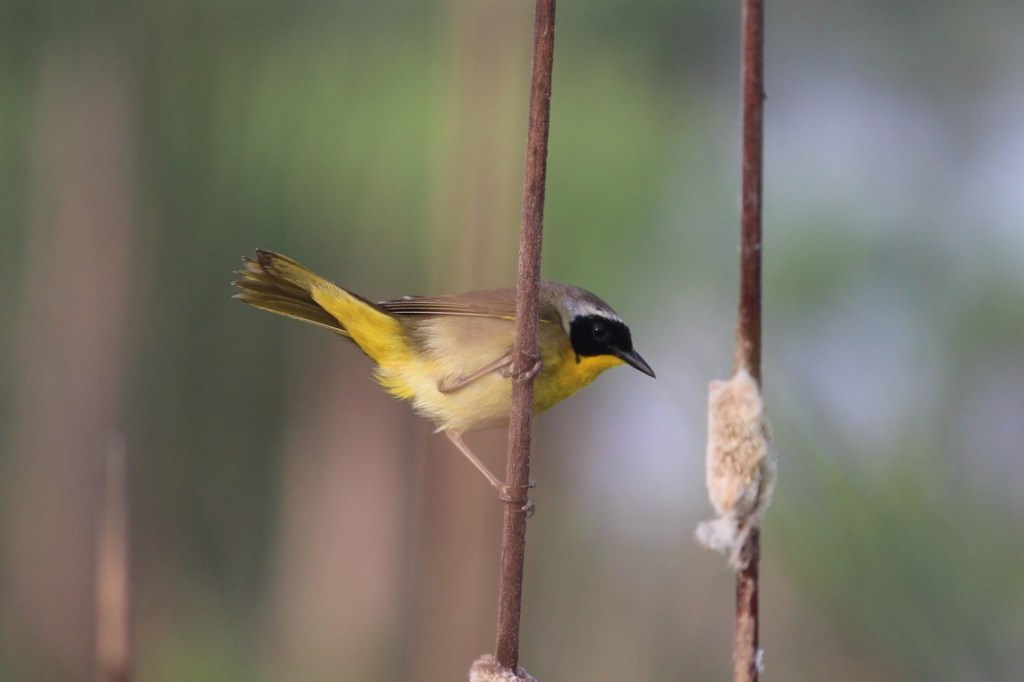
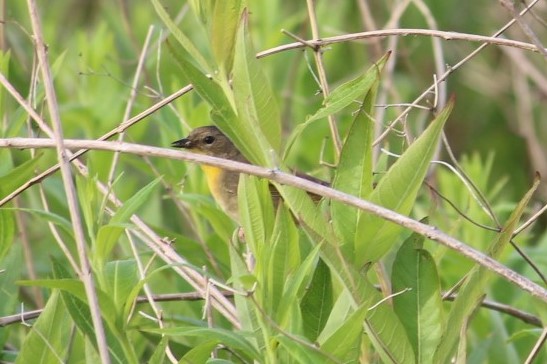
At the far end of the trail, the left side opens up onto a wider stretch of Lake Erie, and it’s here that I watched the amazing aerodynamics of the Black Terns (Chlidonias niger). I observed the Terns foraging for a long while; I find them beautiful birds, masters of the air. One or two would come out of the inner wetland and dip their beaks into the water surface, sometimes coming out with a small fish or tadpole. Prey acquired, they would return, cross the trail, and dip down into an area obscured by reeds and vegetation. I believe these Terns were foraging for their young or partners back in the nests that were hidden within the marsh. The Terns included in the Genus Chlidonias are known as the Marsh Terns for this reason, these Terns rely on wetlands for their breeding territories, often constructing their nesting colonies on floating bits of vegetation.

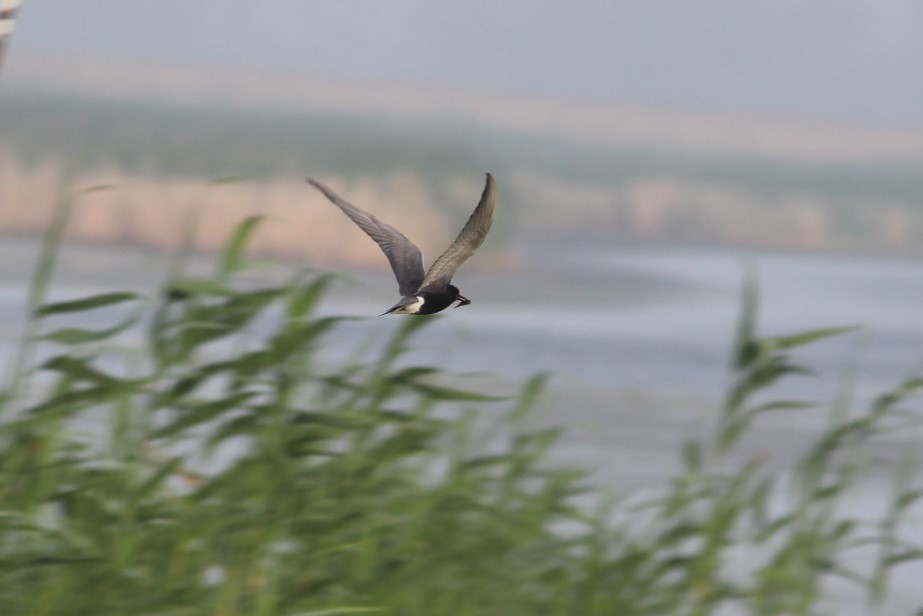
Black Terns foraging over Lake Erie
While watching the Terns, often through the lens of my camera, I was startled by the sight and sound of a large brown object leaping out of the marsh to my right, maybe 10 meters away. The creature responsible was a White-Tailed Deer (Odocoileus virginianus), and it loped ahead of me down the trail after its abrupt emergence from the reeds.

One Tern hovered in the air above the trail and made its soft call. I’m not exactly sure why, but it gave me some excellent views of this beautiful animal.
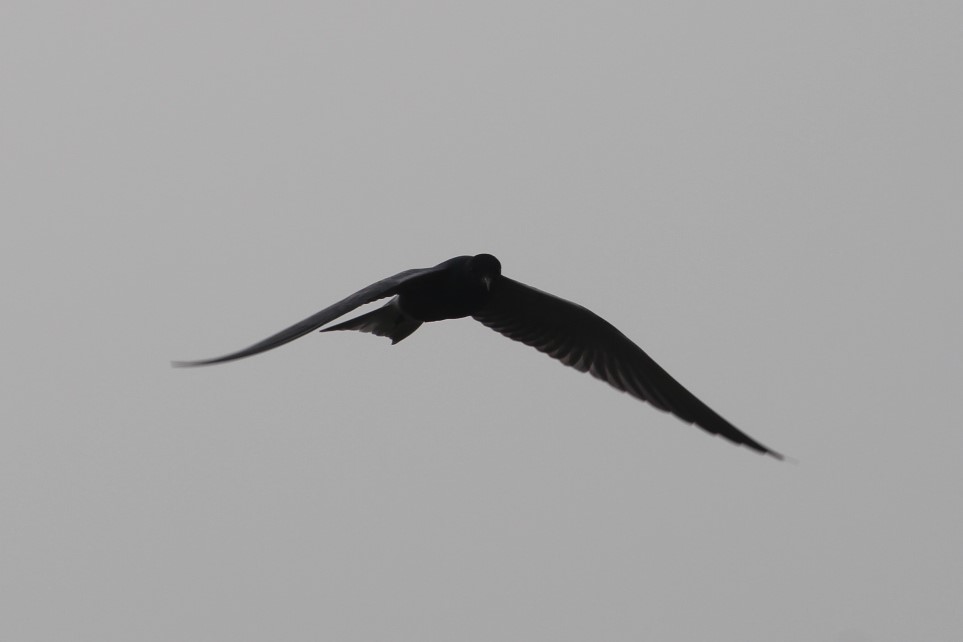
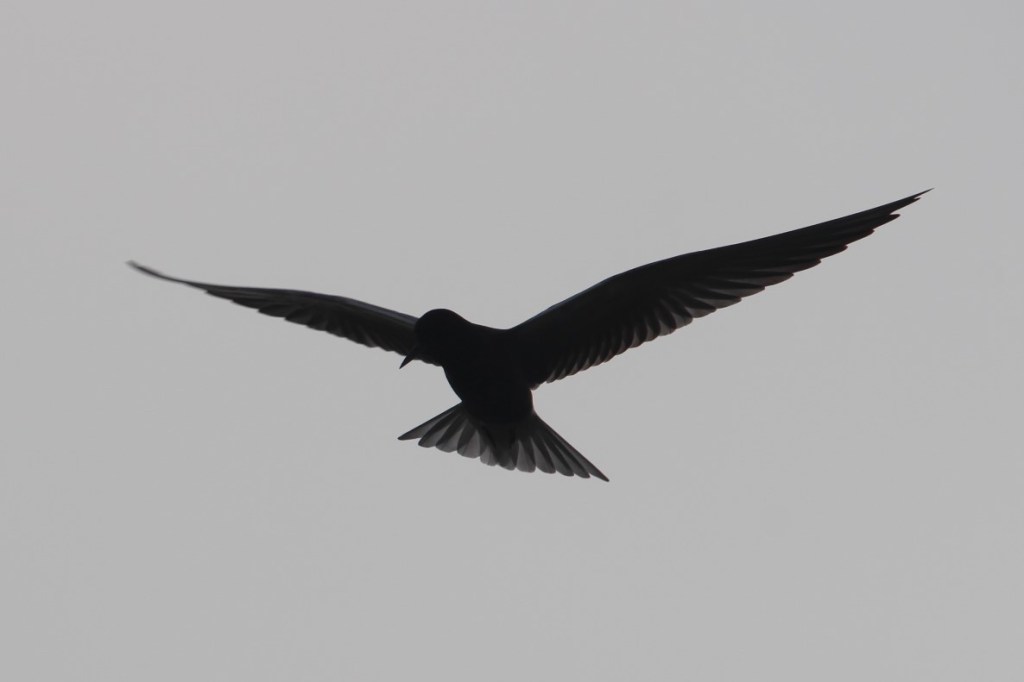
Black Tern ‘hovering’ in place above me.
As I was walking along this stretch of the trail I could hear the unforgettable call of Sandhill Cranes (Antigone canadensis) and I could see that there was a pair at the corner of the trail coming up. These birds are fascinating creatures, and their sounds are similar to the Wolf in conjuring the wild in my mind, a call from another world.
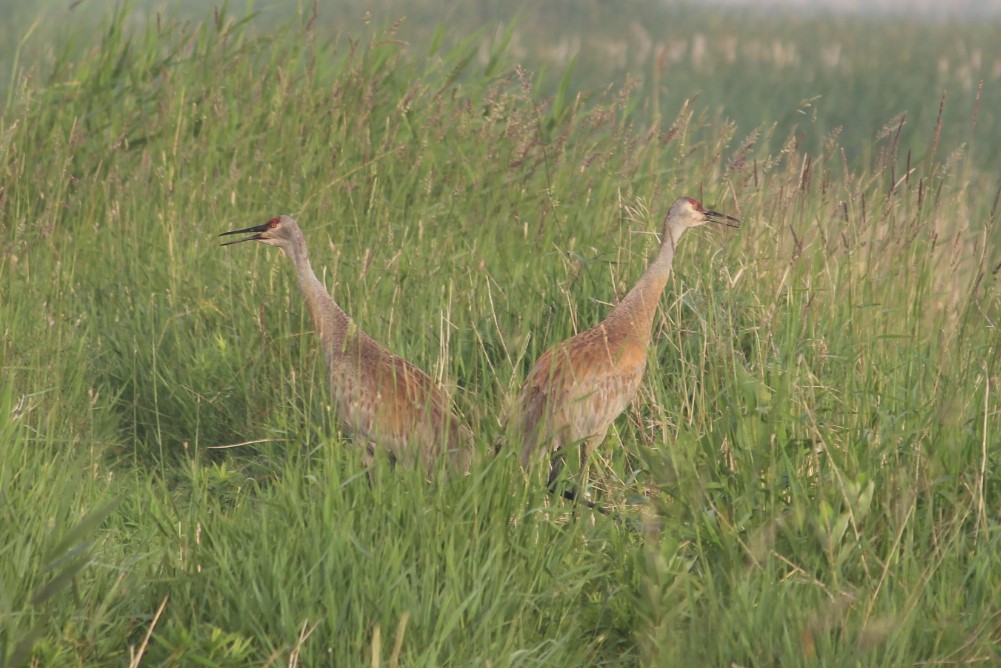
The constant calls of Marsh Wrens and Red-winged Blackbirds were my companions as I walked through a heavily reeded area. On my right, I could see the Terns hovering above the wetlands and descending among the reeds to where I suspect their nests were. Also to my right were the occasional sightings of Muskrats (Ondatra zibethicus), skimming through the water on important business.
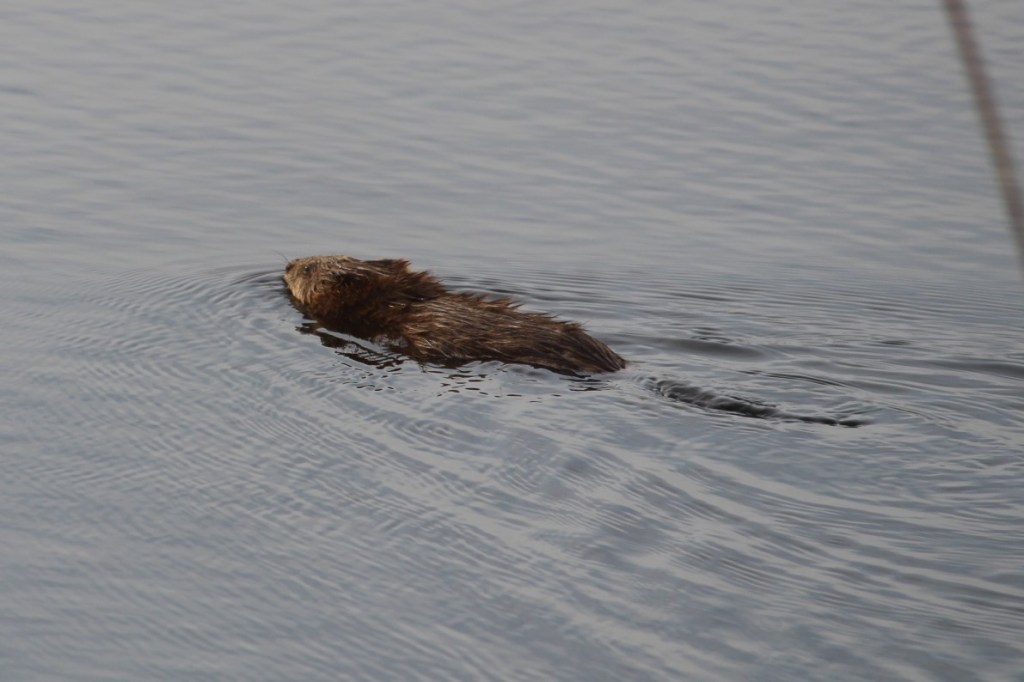
As I neared the parking lot, I was deciding whether to make another loop of the trail in the hopes of seeing more interesting creatures. If you read the title, you’ll know what my decision was, and be sure to return for Part 2 coming soon! As a teaser I will say that I saw more than just Birds and Mammals (even some Invertebrates) on my second round through the marsh!
For previous posts about nature observations of this kind, see:
–MacGregor Point Observations (May 2018
-Algonquin Observations (July 2018), Day One, Two, Three, Four, Five, Six
And if you’re interested in seeing more of my photos and learning some facts about the creatures I’ve observed, follow me on Instagram @norfolknaturalist.
11 replies on “A Visit to Big Creek, Part 1”
[…] This is the second loop of my journey through the Big Creek Conservation Area Trail. For part 1, go here. […]
LikeLike
[…] Visit to Big Creek, Part 1 and […]
LikeLike
[…] –A Visit to Big Creek, Part 1 […]
LikeLike
[…] –A Visit to Big Creek, Part 1 […]
LikeLike
[…] Visit to Big Creek, Part 1 and Part […]
LikeLike
[…] Visit to Big Creek, Part 1 and Part […]
LikeLike
[…] Visit to Big Creek, Part 1 and Part […]
LikeLike
[…] for myself. First I wrote up my experiences visiting a trail in Long Point, in two parts (Part 1 and Part 2). Then I wrote an article about Wrens […]
LikeLike
[…] –A Visit to Big Creek, Part 1 and Part 2 […]
LikeLike
[…] –A Visit to Big Creek, Part 1 […]
LikeLike
[…] –A Visit to Big Creek, Part 1 […]
LikeLike